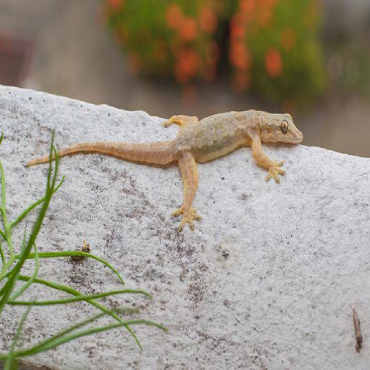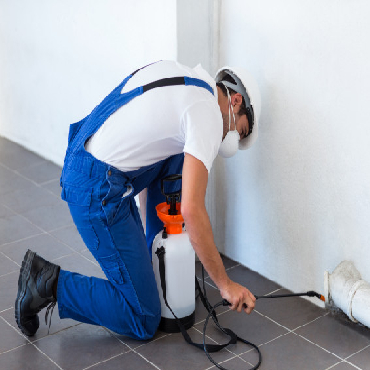Expert Lizard Management
Lizard Management
The common house gecko (Hemidactylus frenatus) is a gecko native to South and Southeast Asia. It is also known as the Asian house gecko, Pacific house gecko, wall gecko, house lizard, tayoto or moon lizard. Most geckos are nocturnal, hiding during the day and foraging for insects at night. They can be seen climbing walls of houses and other buildings in search of insects attracted to porch lights, and are immediately recognisable by their characteristic chirping.


Why are they considered as Pests
Lizards directly are not trasmitting any disease . However, there droppings are cause of contaminations, can cause stains and for a commercial property specially food and pharma , presence of lizard is considered as a non confirmity. Further, House geckos may bite when stressed, though their tiny teeth are not capable of breaking human skin. Live or dead lizard when fall on a open product can cause contamination too.
Sign of Lizards Infestation
How to we Prevent them
Best way to manage house lizard is to prevent them.
 Food Sources
Like all pests, lizards love food, and they’ll happily set up shop anywhere they can find it. While lizards mainly eat worms, ants, spiders, beetles, and flies (meaning you’ll commonly have a lizard problem if you have any of these other pest problems), they also love fruits and veggies and crumbs left behind by people.
As such, they’re common in kitchens, bathrooms, and outdoor spaces – like gardens and compost piles.
Food Sources
Like all pests, lizards love food, and they’ll happily set up shop anywhere they can find it. While lizards mainly eat worms, ants, spiders, beetles, and flies (meaning you’ll commonly have a lizard problem if you have any of these other pest problems), they also love fruits and veggies and crumbs left behind by people.
As such, they’re common in kitchens, bathrooms, and outdoor spaces – like gardens and compost piles.
 Shelter
Lizards love dark, cool places, and homes offer plenty of those. They’ll hide behind cupboards and furniture and are often found behind sheds, raised garden beds, and benches outdoors.
Shelter
Lizards love dark, cool places, and homes offer plenty of those. They’ll hide behind cupboards and furniture and are often found behind sheds, raised garden beds, and benches outdoors.
 Water
Sources of water – either indoors or out – will draw lizards to your property. Pet bowls, birdbaths, or even leaking pipes and fixtures will provide enough water for lizards to survive and thrive for months.
Water
Sources of water – either indoors or out – will draw lizards to your property. Pet bowls, birdbaths, or even leaking pipes and fixtures will provide enough water for lizards to survive and thrive for months.
 They enter the proerty through cable and pipeline entry gaps /windows/gaps in shed etc. hence, identifying and closing entries plays a major role in preventive them.
They enter the proerty through cable and pipeline entry gaps /windows/gaps in shed etc. hence, identifying and closing entries plays a major role in preventive them.
Treatment Options
DIY treatment options are very limited and dont give much success. Lizards are thick skinned creatures hence, controlling them through residual spray is very difficult. Further, the get active after dust hours hence, physical trapping is most viable soultion at present. Spraying strong pesticides directly on lizard also can kill them but it leaves the treated area meshy as lot of pesticides falls on ground and can lead to contamination of products. Hence, best way to manage is carrying out trapping activity during after dusk . Water jet spray can be used to make them fall from walls and can be trapped with the help of commecial glue boards
